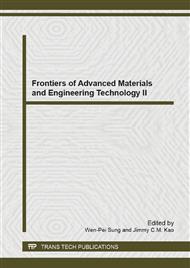p.44
p.48
p.53
p.57
p.61
p.65
p.69
p.73
p.77
Characteristics of Magnetic Susceptibility of Rocks from the Iron-Copper Deposit in Dongchuan Region of Yunnan
Abstract:
The magentic susceptibility of rocks, breccia, dolomite, diabase, slate, siltstone and tuff are main concern, have been measured in the Dongchuan region of Yunnan, China. The experimental data suggest that different rocks have different magnetic susceptibility, and magentic susceptibility of igneous rocks is the highest and has big variation, that is represented by diabase, and these characteristics always react on identification of rock types quickly in the field operation and laboratory technique. As an economic and effective technique, the magentic susceptibility is important magnetic parameters for the rocks in Dongchuan, at the same time is also an obvious sign in looking for cupreous magnetite.
Info:
Periodical:
Pages:
61-64
Citation:
Online since:
April 2014
Authors:
Keywords:
Price:
Сopyright:
© 2014 Trans Tech Publications Ltd. All Rights Reserved
Share:
Citation:


